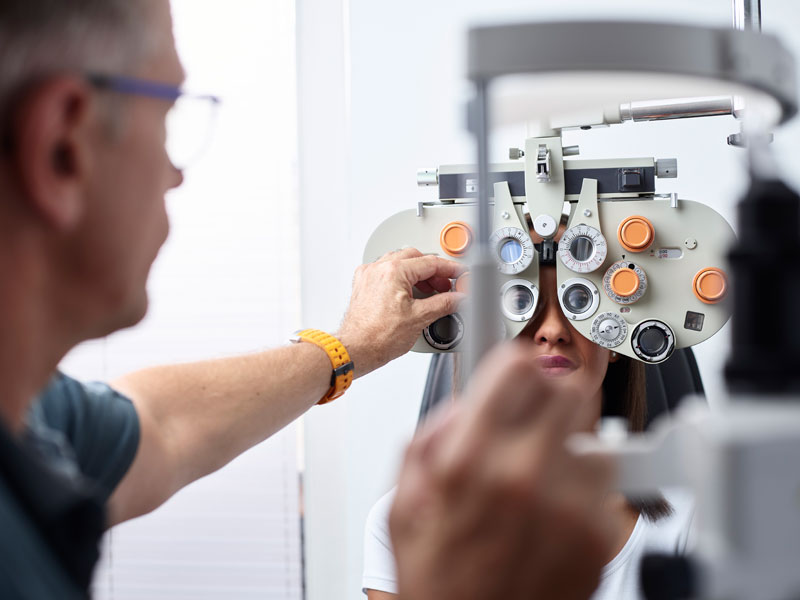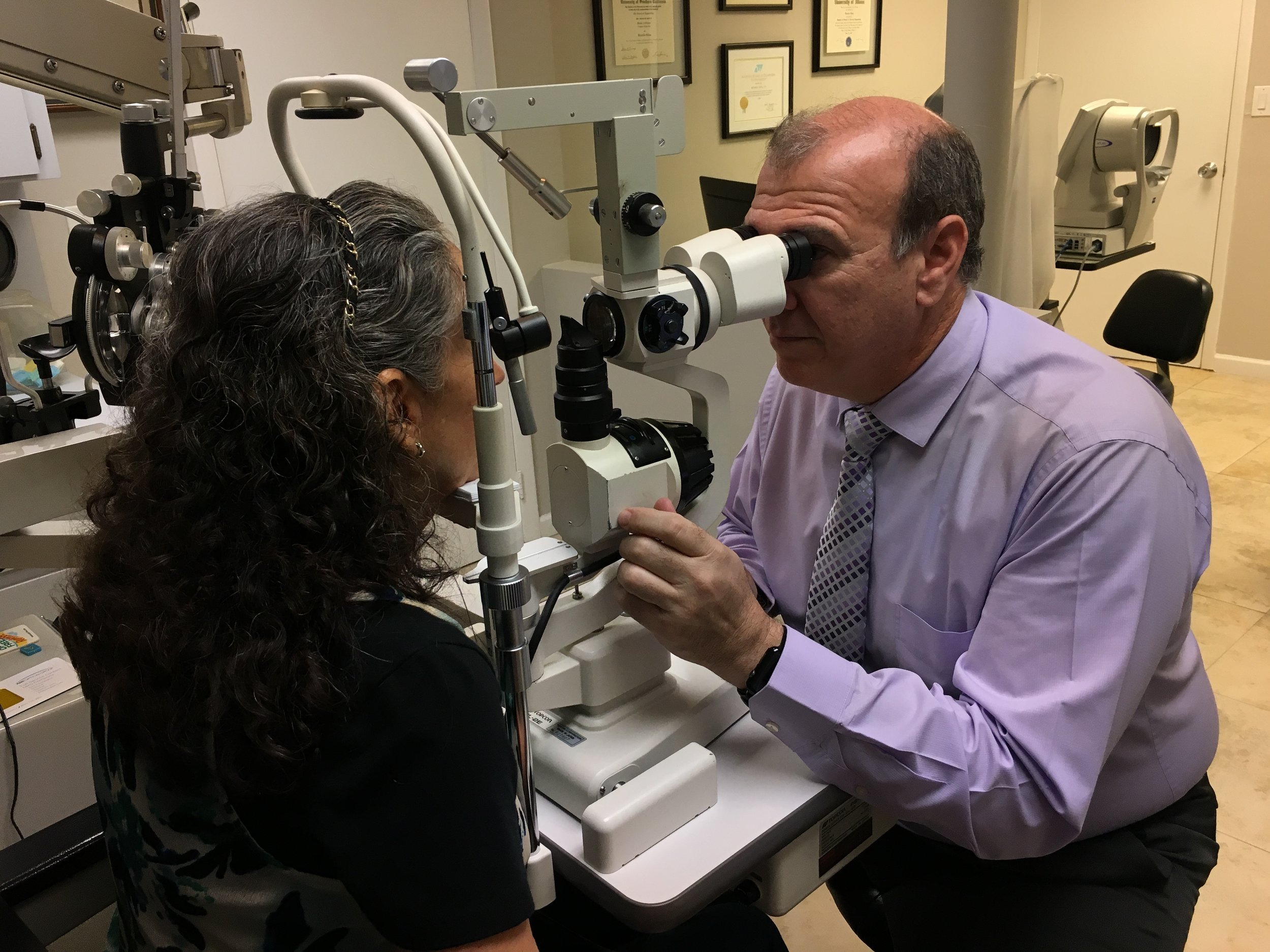Experience Personalized Treatment with Opticore Optometry in Chino
Experience Personalized Treatment with Opticore Optometry in Chino
Blog Article
Checking Out the most up to date Technological Developments in Optometry and What They Mean for Eye Doctors
From the precision of Optical Comprehensibility Tomography to the nuanced insights used by AI-driven diagnostic tools, these innovations are setting brand-new standards in person evaluation and treatment. As these innovations permeate the technique, optometrists are encountered with the challenge of embracing these tools to boost individual end results.
Developments in Diagnostic Devices
Advancing the area of optometry, developments in diagnostic devices have revolutionized the method eye care experts evaluate and identify aesthetic problems and ocular conditions. The past years has actually experienced significant technological developments, enabling more extensive and accurate analyses. Optical Comprehensibility Tomography (OCT), for instance, provides high-resolution cross-sectional photos of the retina, enabling for the early detection of illness such as glaucoma and age-related macular degeneration. This non-invasive imaging method has become indispensable in modern optometric practice.
An additional secret technology is the introduction of sophisticated corneal topography systems, which map the surface curvature of the cornea with accuracy. These tools are especially useful for suitable contact lenses and detecting corneal conditions. In addition, digital retinal imaging has actually transformed typical ophthalmoscopy, offering in-depth, panoramic views of the retina that help with extensive visual evaluations.
The development of wavefront aberrometry has additionally been important, making it possible for the analysis of refractive errors with unparalleled accuracy (Eye Doctor). This modern technology aids in personalizing restorative lenses and improving surgical results for refractive surgical treatments. Jointly, these diagnostic innovations encourage eye doctors to provide premium patient treatment, making certain very early treatment and customized treatment techniques, inevitably boosting visual health and wellness end results
AI in Person Monitoring
Structure on the structure of innovative analysis devices, the incorporation of man-made intelligence (AI) in client monitoring represents a transformative leap for optometry. AI systems are increasingly used to improve performance, accuracy, and personalization in patient care.
Furthermore, AI-driven systems facilitate structured client interactions and management procedures. Automated organizing, online consultations, and personalized follow-up strategies not only boost client satisfaction yet likewise maximize time management for specialists. These systems can triage patients based on the seriousness of their problems, making certain that those in essential demand get punctual focus.
In addition, AI enhances decision-making by supplying optometrists with evidence-based recommendations and treatment pathways. By incorporating information from electronic health records, AI devices offer insights that inform medical decisions, decreasing the danger of errors and enhancing client end results. As AI remains to develop, its role in person administration will likely broaden, improving the landscape of optometric care.
Advances in Retinal Imaging
In the world of optometry, retinal imaging has actually witnessed remarkable technological improvements that are improving analysis abilities and individual care. Advancements such as Optical Coherence Tomography (OCT) and fundus photography have transformed exactly how optometrists evaluate the retina and envision.
Boosted imaging methods like OCT angiography are more refining diagnostic precision. This non-invasive strategy maps blood flow in the retina, providing important understandings right into vascular wellness without the requirement for color shots. Furthermore, flexible optics innovation is being integrated into retinal imaging systems to remedy ocular aberrations, providing unmatched picture clearness. Such developments facilitate the recognition of min retinal changes that could indicate condition development.
Furthermore, innovations in expert system are boosting retinal imaging by enabling automatic analysis of large datasets. These systems assist eye doctors in visit this site right here determining patterns a sign of pathology, thereby boosting diagnostic accuracy and effectiveness. Jointly, these technologies are i was reading this transforming retinal imaging into a foundation of contemporary eye care, enhancing end results and broadening restorative opportunities.
Teleoptometry's Expanding Function
Teleoptometry is significantly ending up being an essential element of eye care, driven by improvements in data and analysis devices. As optometry embraces digital transformation, teleoptometry promotes remote consultations, permitting eye doctors to prolong their services past traditional limits. This is especially advantageous in underserved and rural locations where accessibility to specialized eye treatment is typically minimal. By leveraging high-resolution video conferencing and progressed retinal imaging, optometrists can conduct comprehensive eye tests from afar, making sure timely diagnosis and treatment.
The assimilation of man-made knowledge (AI) further enhances teleoptometry, enabling the evaluation of visual data and aiding in the detection of eye problems such as glaucoma and diabetic retinopathy. AI-powered formulas can quickly interpret complicated imaging information, providing optometrists with beneficial understandings that reinforce scientific decision-making.
Moreover, teleoptometry sustains continuity of care through seamless integration with electronic health and wellness records (EHRs), allowing optometrists to keep extensive client histories. This ensures that clients get constant and individualized care even when seeking advice from different specialists.
In spite of these benefits, obstacles remain, including ensuring data security and handling person assumptions. Teleoptometry represents a significant stride in the direction of even more easily accessible, effective, and patient-centered eye treatment. As modern technology develops, its function is positioned to website here increase even more.

Future Trends in Eye Care
A myriad of ingenious patterns is readied to improve the future of eye treatment, driven by technical developments and the advancing requirements of clients. One significant trend is the integration of synthetic knowledge (AI) in diagnostics, which promises to improve the precision and efficiency of eye exams. AI algorithms can analyze huge amounts of data from retinal pictures, potentially finding conditions like diabetic retinopathy and glaucoma earlier than standard techniques.
Furthermore, individualized medicine is obtaining grip in optometry, with genetic testing educating personalized treatment plans. This technique aims to optimize client outcomes by tailoring interventions to private genetic accounts. Wearable innovation, such as clever contact lenses, is likewise on the horizon, using real-time tracking of intraocular pressure or glucose degrees, thus providing constant understandings into ocular and systemic health and wellness.
The adoption of enhanced reality (AR) and digital truth (VIRTUAL REALITY) in training and individual education and learning is an additional arising pattern. These technologies use immersive experiences that can boost understanding and skills both for eye doctors and people. As these patterns develop, optometrists need to stay abreast of technical developments to give advanced treatment, ensuring enhanced individual end results and satisfaction in the vibrant landscape of eye care.
Conclusion

Collectively, these analysis innovations equip optometrists to supply premium individual care, guaranteeing early treatment and customized treatment strategies, inevitably boosting visual wellness results.

As these technologies continue to advance, optometrists should adjust and include them into method, eventually maximizing workflow efficiency and raising the criterion of eye treatment delivered to clients.
Report this page